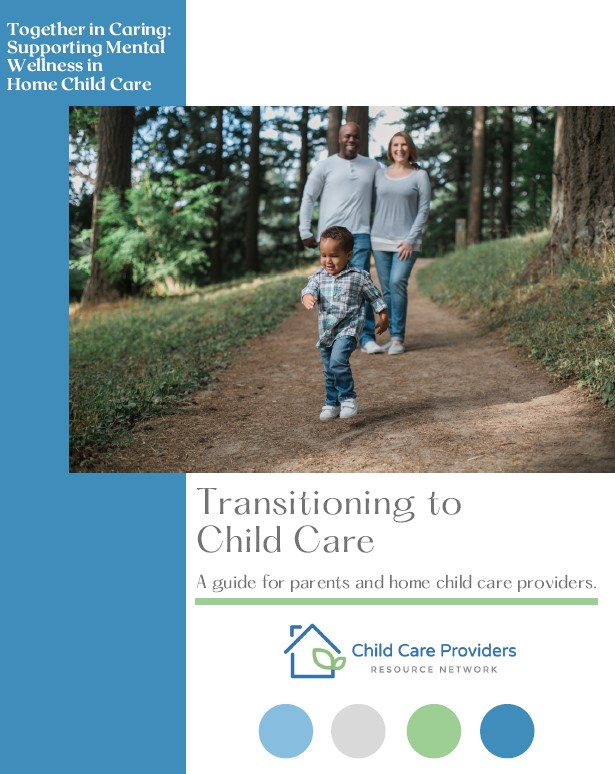Transitioning to Child Care
Written by Julie Bisnath, BSW RSW
Home child care providers are one of the most influential people in a child’s early life—helping to shape the developing brain and laying a strong foundation for future learning and growth. A quality home child care environment features a caregiver who is committed to the well-being and safety of the children in their care. This commitment begins during the transition phase as the caregiver works to establish a secure attachment and foster a deep sense of belonging for each child.
A secure attachment—the component of an adult-child relationship relating to the child’s safety and security—develops from a consistent, reliable, responsive, and caring relationship. It is within this secure attachment that young children learn to trust others. It also provides them with a safe place from which to explore and investigate the world. Feeling secure and having a strong sense of belonging allow children the freedom to learn and grow.
One of the most fundamental and intimate human needs is the need for connection and belonging—the feelings and experiences of being valued and of forming meaningful relationships with others. Ontario’s pedagogical document How Does Learning Happen? describes belonging as a core foundation of the framework.
“When children are strongly connected to their caregivers, they feel safe and have the confidence to play, explore, and learn about the world around them. Enabling children to develop a sense of belonging as part of a group is also a key contributor to their lifelong well-being. A sense of belonging is supported when each child’s unique spirit, individuality, and presence are valued.” How Does Learning Happen? Ontario’s Pedagogy for the Early Years, page 24
Home child care environments allow children to grow and learn within the comfort and structure of a family setting. Just as with any family, connection and relationship between the members of a home child care family are essential. A strong foundation of trust, open communication, mutual respect, and kindness between a parent and provider will allow the child to flourish.
All children are different and each child will adjust to child care in their own time and way. Factors including the child’s age, communication skills, and comfort with being left in the care of others, all contribute to how a child might react when starting child care. Here are a few general things to expect:
- A range of emotions that might include excitement, joy, apprehension, sadness, and/or worry.
- A possible change in behaviour and/or eating/sleeping/toileting habits.
- Days that are easy and days that are hard.
We know that starting child care can be hard. With this in mind, we’ve set out to offer a range of practical suggestions and online resources for both parents and providers. Tools and tips to help ease the transition, establish a sense of belonging, and pave the way for a successful child care partnership.
“Transitioning to Child Care: A Guide for Parents and Home Child Care Providers” includes information on all of the following topics:
- Transitioning during COVID-19
- Easing the transition–what parents can do and what providers can do
- Napping and Breastfeeding during the transition period
- Saying goodbye and cherishing connection
- Transition schedules
- Picture book suggestions
- Transition rituals
- Using a visual schedule
- Creating a Family Wall
- Extreme separation and other anxiety disorders
You can read the full guide here: https://ccprn.com/wp-content/uploads/2021/10/Transitioning-to-Child-Care-Final-Sept-2021.pdf

